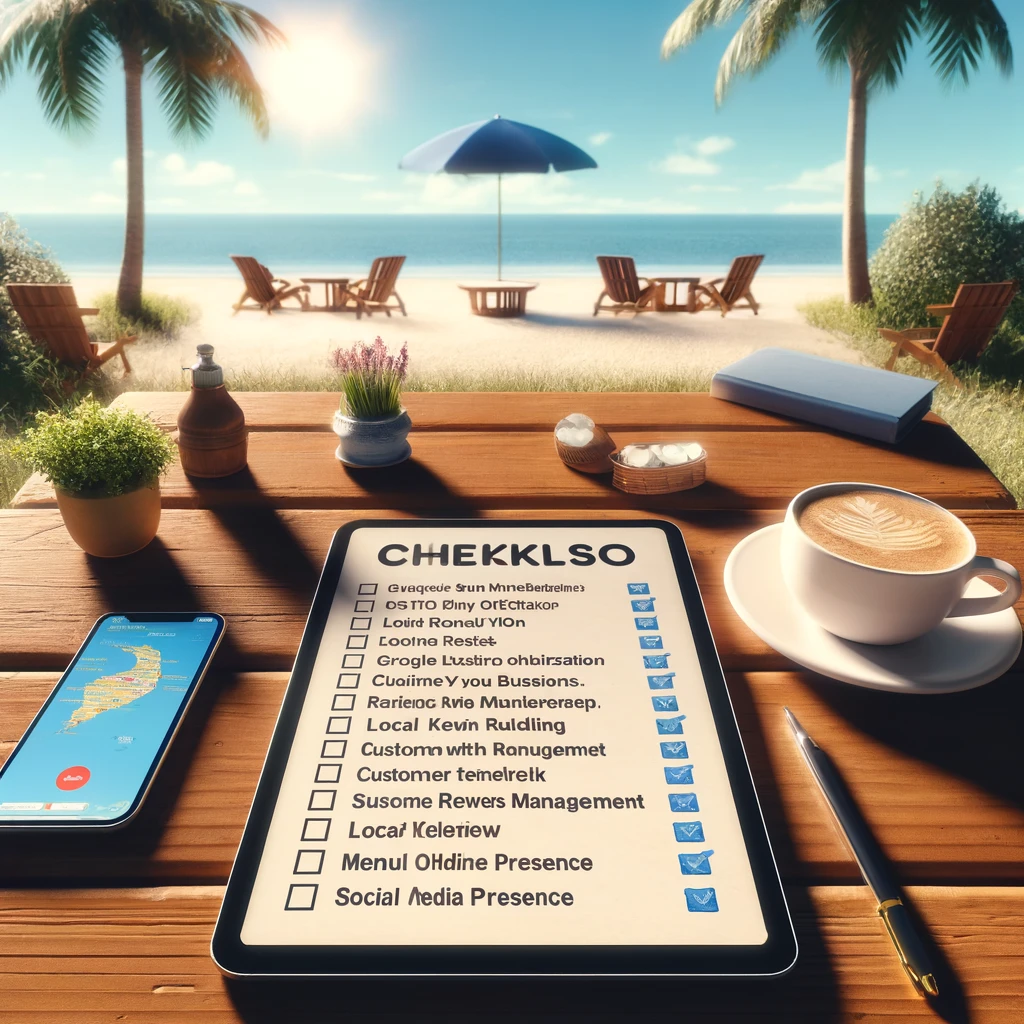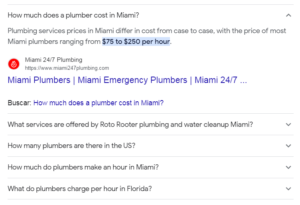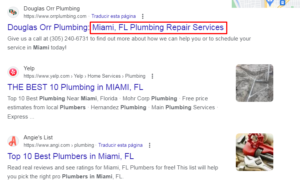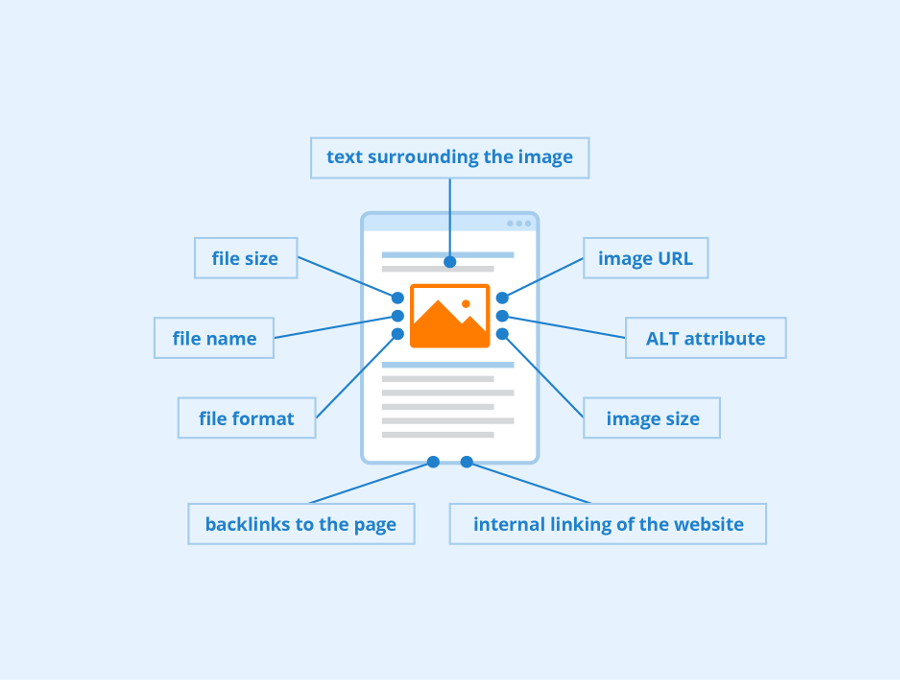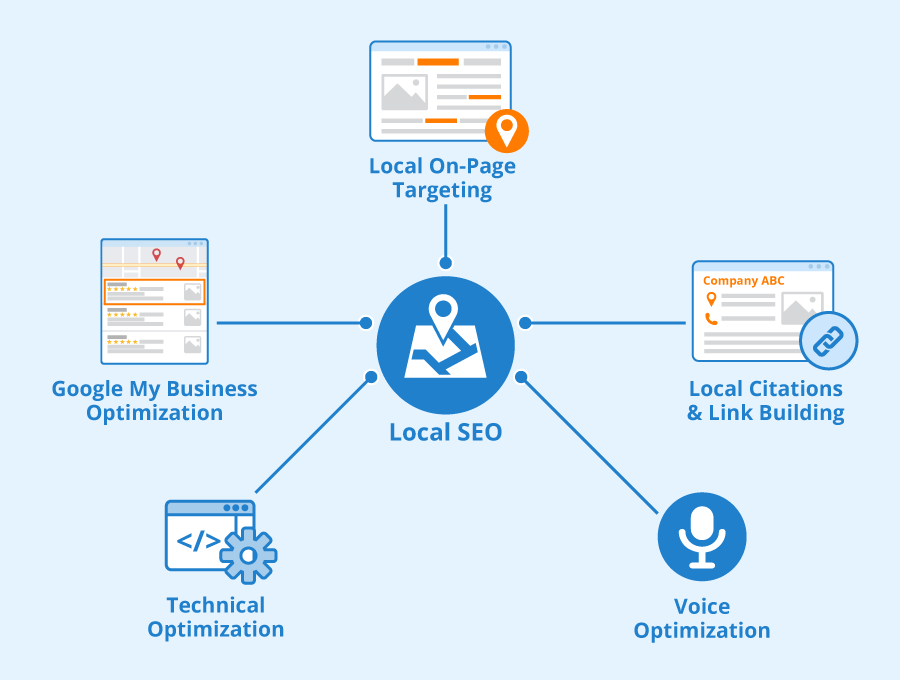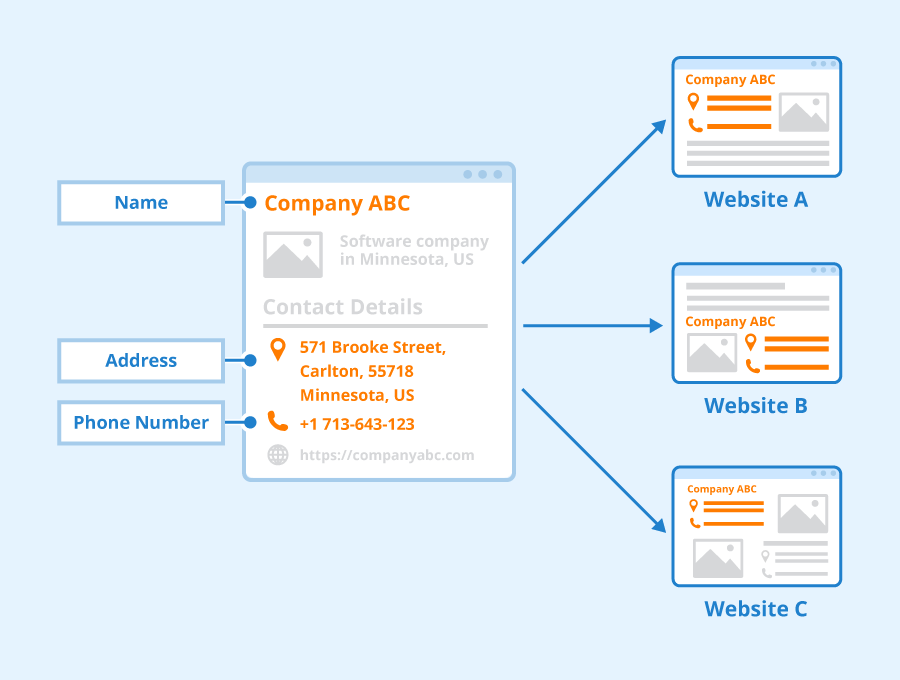In Florida’s dining scene, where competition is as intense as its flavors, a well-designed digital strategy is crucial for restaurants to stand out. From meticulous keyword selection to optimizing online presence through images and reviews, each element plays a vital role in attracting locals and visitors alike.
In this article we will show you how local SEO tactics, web content management, and digital marketing can transform a restaurant in Florida into the favorite of diners from all corners.
1. Quality Content
In Florida’s vibrant dining scene, standing out online can be as challenging as serving the perfect dish during rush hour. However, with the right local SEO strategy, your restaurant can not only stand out, but also become a favorite choice for locals and tourists alike.
Incorporation of Local Keywords
The first step to capturing the attention of your local audience is through careful keyword selection. Imagine that your restaurant is famous for its ceviche in Miami Beach. Keywords like “best ceviche in Miami Beach” or “seafood restaurants in Miami” are essential for your web content, menus, and social media posts. By including terms specific to your location and culinary offerings, you improve your chances of appearing in relevant searches.
Keep in mind that many of your clients will not search for keywords with their location. They understand that Google will offer geolocated results and sometimes they simply add “near me” to make it clear that the result should be as close as possible. However, you won’t always have those
Highlighting your Menu and Specialties
Your menu is not just a list of dishes; It is an essential marketing tool. When detailing your specialties, use mouth-watering, keyword-rich descriptions.
For example, instead of simply listing “ceviche,” describe your signature dish with details that reflect its uniqueness and local flavor, such as “Miami-style shrimp ceviche with hints of fresh cilantro and lime, served with crispy plantain chips.” At the time of making these descriptions
Voice Search Optimization
With the rise of smart assistants, optimizing your content for voice search is crucial. Integrate a frequently asked questions section into your website that addresses common questions asked in a conversational manner.
Answers questions like “Where can I find the best dining atmosphere in Fort Lauderdale?” or “What restaurants offer live music in Orlando?” The suggested questions that appear in Google searches can be used for this.
Keep in mind that there is a high percentage of unique searches, so optimizing your website with the appropriate semantics will make users arrive in one way or another, adding some additional conversions.
Strategic Use of Meta Tags and Titles
Every page on your site, from the home page to the blog, should have optimized titles and meta descriptions. These should include not only your main keywords but also a local touch.
For example, a blog title could be “Exploring the Unique Flavors of Key West: A Guide for the Adventurous Foodie,” with a meta description that invites the reader to discover your culinary delights and the unique atmosphere of your establishment.
Make use of a blog
Something we have been experimenting with our restaurant clients is the use of blogs. These can help increase the authority of the page, attract new customers, and connect more closely with your current customers.
Recipes, gastronomic recommendations of the place, reviews of services and dishes can be a good way to attract new customers, as well as make yourself more visible through content positioning.
2. Optimization of local pages
When it comes to ensuring your Florida restaurant stands out in search results, local page optimization plays a crucial role. This section will guide you through specific strategies to improve your restaurant’s online visibility locally, which will not only help you attract more customers but also build a strong digital presence in your community.
Use Local Keywords on your Website
For your restaurant to appear in local searches, it is crucial to incorporate keywords relevant to your location into your website content, including the title, meta description, body text, and image ALT tags. For example, instead of just using “Italian restaurant,” opt for “Italian restaurant in Miami.” This helps Google better understand the location of your business and show you in relevant local searches.
Get Quotes and Links from Local Sites
Citations (mentions of your business online that include your name, address, and phone number) and links from relevant local websites can significantly improve your visibility in local searches. Sign up for local and industry directories, participate in community events, and collaborate with other local businesses to get mentions and links. This not only increases your online presence, but also strengthens your site’s authority in the eyes of Google.
Maintain Online Information Consistency
Make sure your restaurant information is consistent across all online platforms, including your website, social media, and business directories. Discrepancies, such as different phone numbers or addresses, can confuse your customers and hurt your local search rankings.
3. Optimized Images
In today’s digital world, images play a crucial role in attracting and retaining visitors’ attention to your website. For a restaurant in Florida, this means that photos of your dishes, the establishment and the atmosphere can be decisive in convincing potential customers to visit you.
Use High Quality Images
Make sure the images you upload to your website are high quality and accurately represent the experience your restaurant offers. Clear, well-lit photos of your dishes can make website visitors want to try your food.
However, be careful with the file size; Large images can slow down your site, negatively affecting both the user experience and your search engine rankings.
Optimize Image Size
Before uploading an image to your website, reduce its file size without compromising too much on quality. Tools like Adobe Photoshop, TinyPNG, or ImageOptim can help you compress your images.
This is crucial for improving your page loading speed, an important factor for both SEO ranking and visitor retention.
Use Descriptive Alt Tags
Alt tags are short descriptions you provide for images on your website. These are not only important for accessibility, helping screen readers describe images to visually impaired users, but they also allow search engines to understand the content of images.
Be sure to include relevant keywords related to your restaurant and the cuisine you offer, but always keep the descriptions accurate and relevant.
Name Image Files Strategically
The file name of an image is another factor that search engines use to understand and rank your content. Use descriptive names that reflect what the image shows, using hyphens to separate words.
For example, instead of “IMG_12345.jpg”, use “best-paella-miami.jpg”. This improves the indexing of your images and contributes to the overall SEO of your page.
Take advantage of Lazy Loading
Lazy loading is a technique that delays the loading of images on a web page until they are about to enter the user’s viewport. This means that the page can load faster initially, as it only needs to load the visible content.
Implementing lazy loading can significantly improve the loading speed of your site, improving the user experience and potentially your search engine ranking.
4. Optimize your Google My Business
In Florida’s competitive restaurant landscape, appearing at the top of local searches can make a big difference in attracting new customers.
Google My Business (GMB) is a free and powerful tool that can help you manage your online presence on Google, including Search and Maps. Here we show you how to optimize your GMB profile to improve the visibility and attractiveness of your restaurant.
Complete Each Section of your Profile
A complete profile gives potential customers all the information they need to decide to visit your restaurant. Be sure to include:
- Basic information: Name, address, and telephone number.
- Opening hours: Make sure to update it regularly, especially during holidays.
- Category and attributes: Choose the category that best describes your restaurant and add attributes such as “wifi available” or “outdoor terrace.”
- Description: Write a brief description of your restaurant, highlighting what sets you apart.
Add High Quality Photos
Images are essential to attract the attention of your customers. Add high-quality photos of:
- The exterior and interior of your restaurant, to help customers recognize it.
- Popular dishes or specialties.
- The team or special events.
Regularly updating your photos keeps your profile fresh and attractive.
Use Google My Business Posts
GMB allows you to create publications, such as special offers, events, or news about your restaurant. These posts appear directly on your GMB profile and can help capture the attention of potential customers.
Add a Menu
If Google My Business offers the option for your business category, add your menu. This can help customers make decisions before visiting and improves the user experience.
Keep your information up to date
Restaurant information may change, especially in uncertain times. Keep your GMB profile up to date with the latest information on hours, available services (such as delivery or takeout), and any other relevant changes.
5. Local Reviews and Quotes
Reviews are a key factor in a customer’s decision to visit a restaurant. So, take the time to encourage your customers to leave reviews and respond to all of them, whether positive or negative. Not only does this show that you value customer feedback, but it can also improve your search rankings.
Above all, make sure you take advantage of the reviews you have by giving answers to questions, good or bad comments. The important point here is to take advantage of the conversations and encourage users to continue leaving their opinions about your restaurant.
Encourage Positive Reviews
Customer reviews are a powerful marketing tool that can influence the decisions of other potential diners. Encouraging your satisfied customers to leave positive reviews on Google My Business, Yelp, and other relevant platforms can improve your online reputation and visibility in local searches.
Consider implementing strategies such as post-visit email reminders or incentives for those who leave a review. One of our favorite strategies for this purpose is to make use of Wifi marketing for restaurants.
Actively Manage Reviews
Review management doesn’t stop when you receive positive feedback. Responding to all reviews, both positive and negative, shows that you value your customers’ feedback and are committed to continuous improvement.
For negative reviews, offer constructive solutions and show a willingness to resolve any issues, which can turn a negative experience into a positive one.
Take Advantage of Citations in Local Directories
Citations are mentions of your business online that don’t necessarily include a link to your website but do contain your contact information. Make sure your restaurant is listed in relevant local directories and specialized food and hospitality platforms.
Consistency is key; Make sure your name, address, and phone number are identical across all platforms to avoid confusion for both your customers and search engines.
Optimize Information in Appointments
In addition to consistency in contact information, enrich your listings with additional information whenever possible.
This includes descriptions of your restaurant, types of cuisine, menus, opening hours, and photos. The more detailed the information, the more likely customers are to choose your restaurant when looking for dining options.
Monitor your Online Presence
Use online reputation monitoring tools to track what is being said about your restaurant on the web. This will allow you to react quickly to reviews and keep quotes up to date. Proactively managing your online presence can significantly improve your ranking in local search results and attract more customers to your restaurant.
Conclusion
In Florida’s competitive dining environment, an effective digital marketing strategy is essential to standing out. Smart use of local keywords, web content optimization, high-quality image management, and a well-managed Google My Business profile, combined with active attention to local reviews and citations, are key to capturing the attention of both locals. as tourists. These practices not only elevate online visibility, but also foster meaningful connections with customers, positioning restaurants as prominent culinary destinations in Florida’s vibrant scene.
If you are looking for a marketing agency with extensive experience with restaurants, who can help you position your brand and acquire more customers, contact us!



